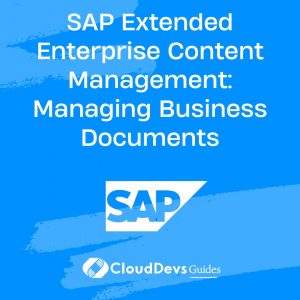SAP Central Finance: Consolidating Financial Data in SAP S/4HANA
SAP Central Finance is a key component of the SAP S/4HANA suite, designed to help organizations streamline their financial operations by consolidating financial data from multiple systems into a single, unified platform. This blog explores how SAP Central Finance works, its benefits, and practical examples of its application in financial data consolidation.
Understanding SAP Central Finance
SAP Central Finance allows organizations to create a unified financial reporting and management system by replicating financial data from various source systems into SAP S/4HANA. This enables a consolidated view of financial information, providing real-time insights and enhancing decision-making capabilities.
How SAP Central Finance Works
SAP Central Finance operates by extracting financial data from different source systems, transforming it as needed, and loading it into the SAP S/4HANA environment. Below are some key components and processes involved in this consolidation:
1. Data Extraction and Transformation
The first step in consolidating financial data is to extract it from various source systems and transform it to align with the data structures in SAP S/4HANA.
Example: Extracting and Transforming Financial Data
SAP Central Finance uses SLT (SAP Landscape Transformation) for real-time data replication. Here’s a simplified explanation of how the extraction and transformation process works:
– Data Extraction: SLT extracts financial data from various source systems, such as SAP ECC or third-party systems.
– Data Transformation: The extracted data is transformed to match the financial structures in SAP S/4HANA, ensuring consistency and compatibility.
2. Data Mapping and Harmonization
Before loading the financial data into SAP S/4HANA, it’s crucial to map and harmonize it to ensure consistency across all data sources.
Example: Mapping Accounts and Entities
SAP Central Finance allows you to map accounts, cost centers, and other financial entities to harmonize the data from different systems. This mapping ensures that all financial data is standardized and can be easily consolidated.
– Account Mapping: Aligns different account structures from source systems to the target SAP S/4HANA structure.
– Entity Mapping: Standardizes entity data like cost centers or profit centers to ensure uniform reporting.
3. Real-time Data Replication
One of the standout features of SAP Central Finance is its ability to replicate data in real-time, providing up-to-date financial information.
Example: Real-time Replication for Financial Reporting
By using SLT, SAP Central Finance replicates data in real-time, ensuring that financial reports in SAP S/4HANA are always current. This real-time replication is essential for organizations that need to make timely financial decisions based on the latest data.
4. Financial Data Consolidation
Once the data is extracted, transformed, mapped, and harmonized, it is loaded into SAP S/4HANA for consolidation.
Example: Consolidating Financial Statements
With all financial data consolidated in SAP S/4HANA, organizations can generate comprehensive financial statements that reflect the entire business. This consolidation simplifies reporting and ensures that decision-makers have access to accurate, unified financial data.
Benefits of SAP Central Finance
SAP Central Finance offers several advantages for organizations looking to streamline their financial operations:
– Unified Financial Reporting: Centralized financial data provides a single source of truth for reporting.
– Real-time Insights: Real-time data replication ensures that financial information is always up-to-date.
– Improved Decision-Making: Consolidated data enables more informed and timely decisions.
– Scalability: SAP Central Finance can scale to accommodate large, complex financial landscapes.
Integrating with Other SAP Solutions
SAP Central Finance can be integrated with other SAP solutions to further enhance its capabilities.
Example: Integration with SAP Analytics Cloud
By integrating SAP Central Finance with SAP Analytics Cloud, organizations can leverage advanced analytics and visualization tools to gain deeper insights into their financial data.
Conclusion
SAP Central Finance is a powerful tool for organizations looking to consolidate financial data from multiple systems into SAP S/4HANA. By streamlining data extraction, transformation, and replication processes, it enables unified financial reporting and real-time insights, ultimately improving financial management and decision-making.
Further Reading:
Table of Contents









